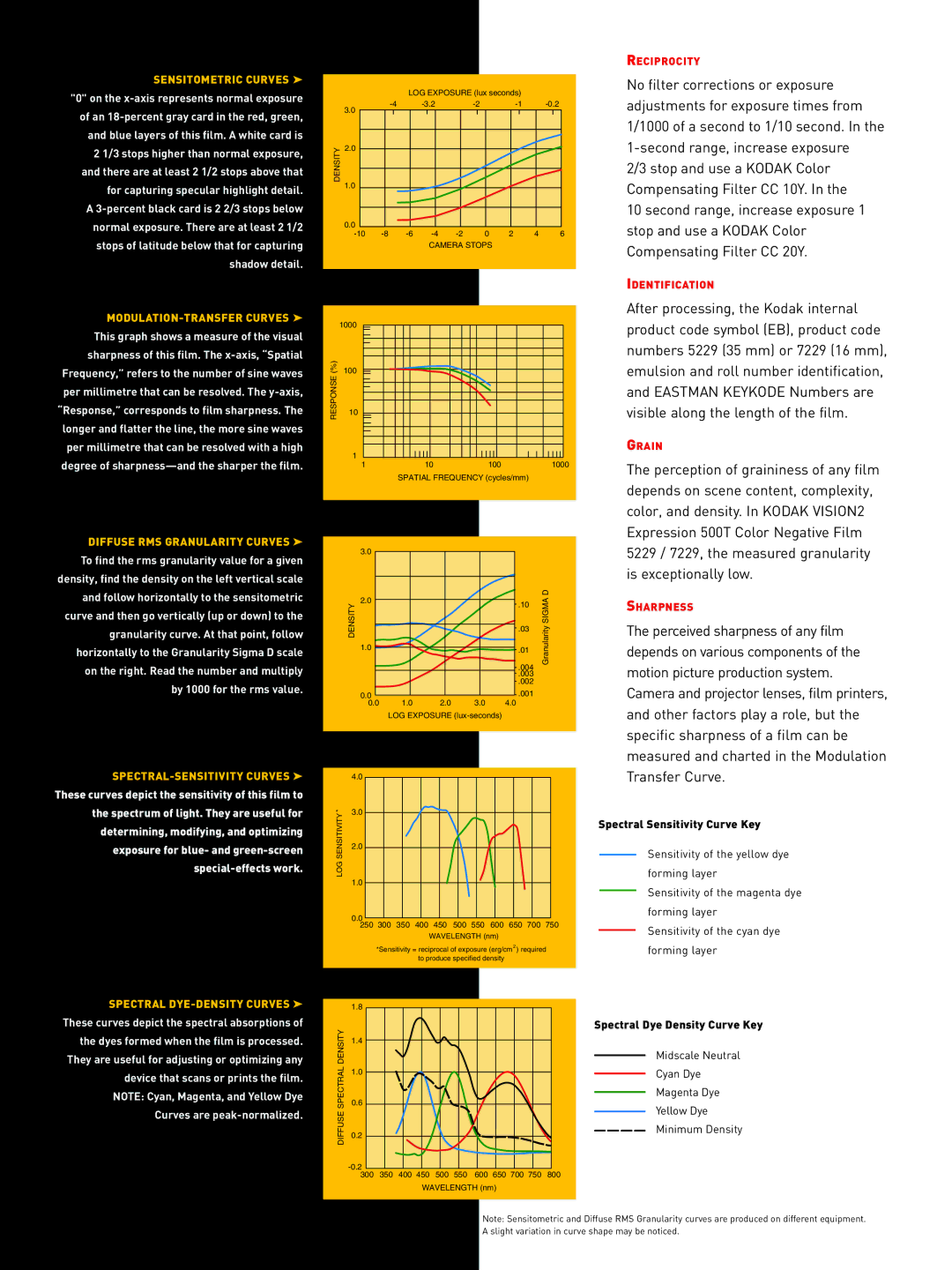5229, 7229 specifications
Kodak 5229 and 7229 are highly regarded motion picture films that are favored by filmmakers for their unique characteristics, versatility, and the nostalgic quality they impart to cinematic projects. These films are designed for professional filmmakers and are prominent choices within the industry for various types of productions, from narrative films to documentaries.Kodak 5229 is a black and white reversal film that is known for its fine grain and wide exposure latitude. This film excels in low-light conditions, making it particularly useful for shooting in environments where lighting can be unpredictable. The high contrast and rich tonal range of 5229 allows for striking visuals that can evoke a sense of realism while maintaining a cinematic flair. It is also recognized for its exceptional sharpness, which contributes to detailed images. The ability to push or pull process this film enhances its adaptability and makes it suitable for a variety of artistic interpretations.
On the other hand, Kodak 7229 is a color negative film that is celebrated for its vibrant color reproduction and overall image quality. This film features a fine grain structure that offers superb detail and clarity, making it a popular choice for both feature films and documentary projects. Kodak 7229 has a wide color gamut that allows for accurate skin tones and lively colors, creating an immersive viewing experience. The film’s exposure latitude is also commendable, granting filmmakers flexibility in various lighting conditions while preserving image integrity.
Both Kodak 5229 and 7229 utilize advanced emulsion technology which contributes to their outstanding performance. They are designed to provide high-quality images that stand the test of time, making them reliable options for filmmakers concerned about archival stability. The films are compatible with a wide range of cameras, further enhancing their utility in production environments.
In summary, Kodak 5229 and 7229 stand out for their respective black and white and color capabilities, appealing to a diverse range of creative needs. Their fine grain, low-light performance, color rendition, and overall imaging quality make them staples in the professional film community. As motion picture film continues to be embraced in an era of digital filmmaking, Kodak's offerings ensure that the art of film remains vibrant and expressive.

